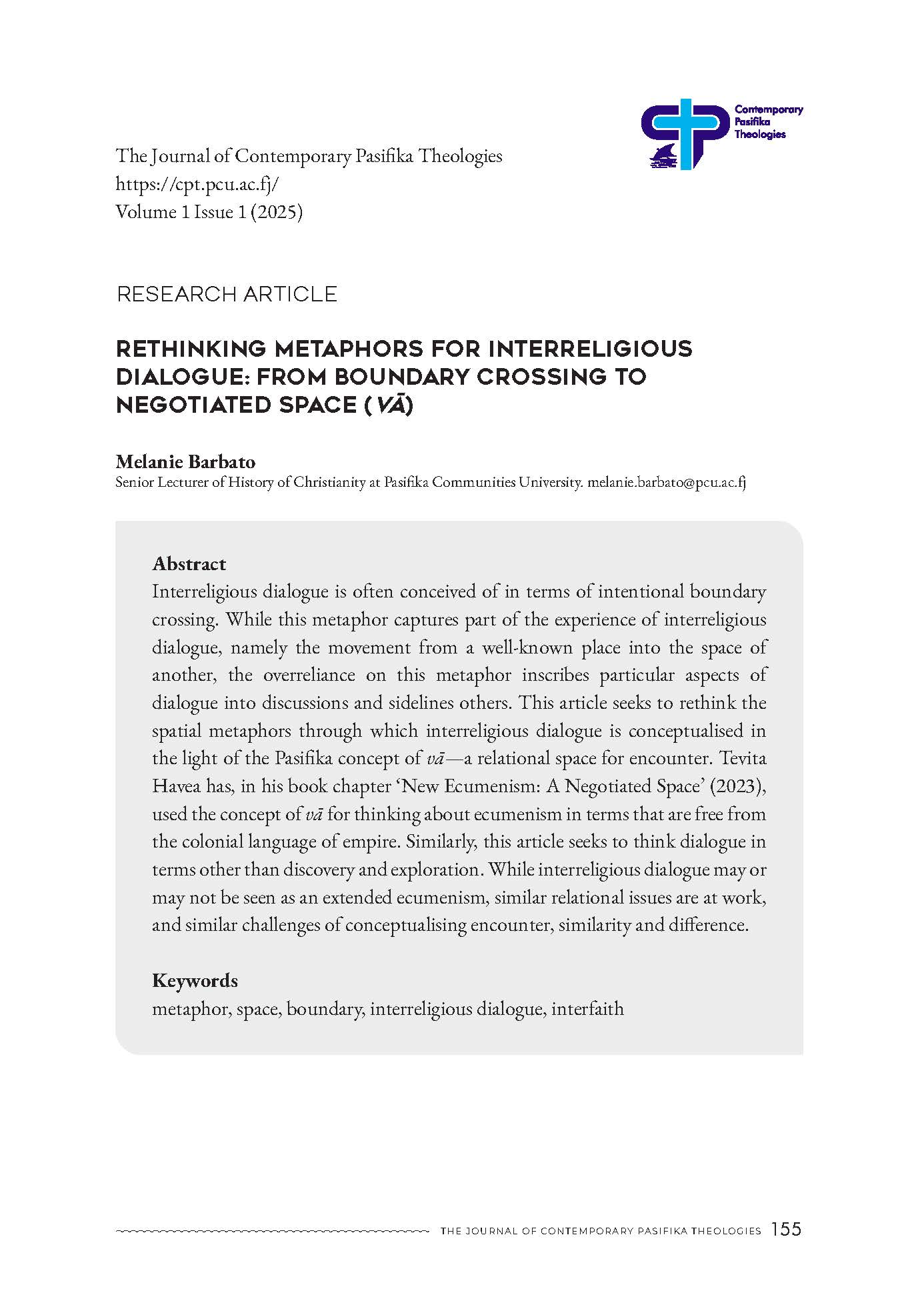Rethinking Metaphors for Interreligious Dialogue
From Boundary Crossing to Negotiated Space (Vā)
DOI:
https://doi.org/10.82025/cpt.v1i1.485Keywords:
metaphor, space, boundary, interreligious dialogue, interfaithAbstract
Interreligious dialogue is often conceived of in terms of intentional boundary crossing. While this metaphor captures part of the experience of interreligious dialogue, namely the movement from a well-known place into the space of another, the overreliance on this metaphor inscribes particular aspects of dialogue into discussions and sidelines others. This article seeks to rethink the spatial metaphors through which interreligious dialogue is conceptualised in the light of the Pasifika concept of vā—a relational space for encounter. Tevita Havea has, in his book chapter ‘New Ecumenism: A Negotiated Space’ (2023), used the concept of vā for thinking about ecumenism in terms that are free from the colonial language of empire. Similarly, this article seeks to think dialogue in terms other than discovery and exploration. While interreligious dialogue may or may not be seen as an extended ecumenism, similar relational issues are at work, and similar challenges of conceptualising encounter, similarity and difference.

Downloads
Published
How to Cite
Issue
Section
License

This work is licensed under a Creative Commons Attribution-NonCommercial 4.0 International License.
